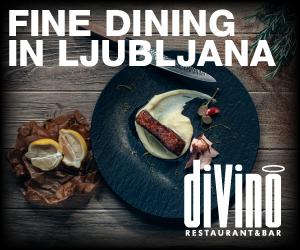Researchers busy unlocking the scent of history
Slovenian and Polish researchers have teamed up to describe the scents of selected items from the two countries' national museums to understand the role of scent in historical context and develop methods to reproduce and archive these scents for future generations.
A collaboration between the National Museum of Slovenia, the Ljubljana Faculty of Chemistry and Chemical Technology (FKKT), and the Krakow University of Economics and National Museum, the Odotheka project involves the analysis of the scent of ten museum items for the time being.
Visitors mostly admire museum items visually, but smell would allow them to experience the items and history in a completely different, personal way, and the project seeks to bring the museum objects closer to them in this way, Matija Strlič of the Faculty of Chemistry says.
They also want to evaluate the importance of smell for understanding the history and use of objects and the habits associated with them, to characterise scents sensorially and analytically and, on this basis, to explore the possibilities for their reproduction.
From snuffbox to Leonardo da Vinci
The items subjected for analysis, five each from Slovenia and Poland, were chosen for their diversity and the significance of scent in their interpretation.
Noteworthy Slovenian artefacts include the snuffbox of the renowned poet France Prešeren (1800-1849), an imperial seal of Empress Maria Theresa, and Carniola antiqua et nova by Johann Weikhard von Valvasor (1641-1693), a natural historian and polymath from Carniola, present-day Slovenia.
Meanwhile, the Polish team first analysed the scent of the famous painting Lady with an Ermine by Leonardo da Vinci, kept by the Czartoryski Museum in Krakow.
The research, whose end goal is a library of scents that could be reproduced and provided to visitors along with the visual experience of an artefact, involves sealing the objects in airtight spaces to capture the volatile compounds responsible for the specific smells.
Hedonic value of scent
These compounds are identified using advanced techniques such as gas chromatography, which separates the different components at elevated temperatures.
This method is coupled with olfactory assessments by trained individuals who describe the scents in detail, noting specific "notes" such as woody, vanilla, or acidic tones, as well as the intensity and hedonic value - whether the scent is pleasant or not, Strlič says.
To carry out the research, several olfactory experts have been trained using a special programme to easily identify and describe the smells of some 60 common aromatic compounds and their mixtures.
They first took on his grandmother's perfume. As Strlič explains, it is ethical in heritage science research to begin developing a new methodology by studying an object that is not of great historical value.
"We can handle such an object, a test object, as it were, without fear, and thus develop a process that can be transferred to the museum. The second reason that the perfume bottle was the test object is that we wanted to treat as a first object one that has a really intense smell and where the smell is essential for understanding the object," he writes.
Reconstructing smells
A crucial aspect of the project is the development of methods to synthesise or reproduce these historical scents. Strlič says that once a scent has been evaluated both sensorially and olfactorily, and its chemical composition is known, it can be reconstructed in the laboratory.
This means a solution can be prepared that has the same scent as the object itself and can be offered to museum visitors in a variety of ways. Examples from museum practice show that it is best to do this for each visitor separately.
The Slovenian National Museum explained that the project, which started at the end of 2021 and will conclude on 30 November this year, was also motivated by the frustrating absence of scent in some of its past exhibitions, notably a 2008 exhibition titled Images of the Balkans.
It is also topical in the context of a planned exhibition called Culture of Enjoyment, where coffee, tea, tobacco, and chocolate will play a crucial role.
Moving forward, the project participants believe that the work on capturing and archiving scents should continue beyond the current scope. Indeed, many of the Slovenian participants are already involved in a new project titled Scent and Intangible Cultural Heritage, which started this month.


